Last December, I decided to take a big step to improve the branch structure on a Chinese quince. I cut off most of the branches.
The tree was fairly ramified, but the size and arrangement of the branches didn’t convey the gnarly character that I associate with quince bonsai. The remedy, although severe, is the fastest way to make improvements. Here’s what this work looked like.
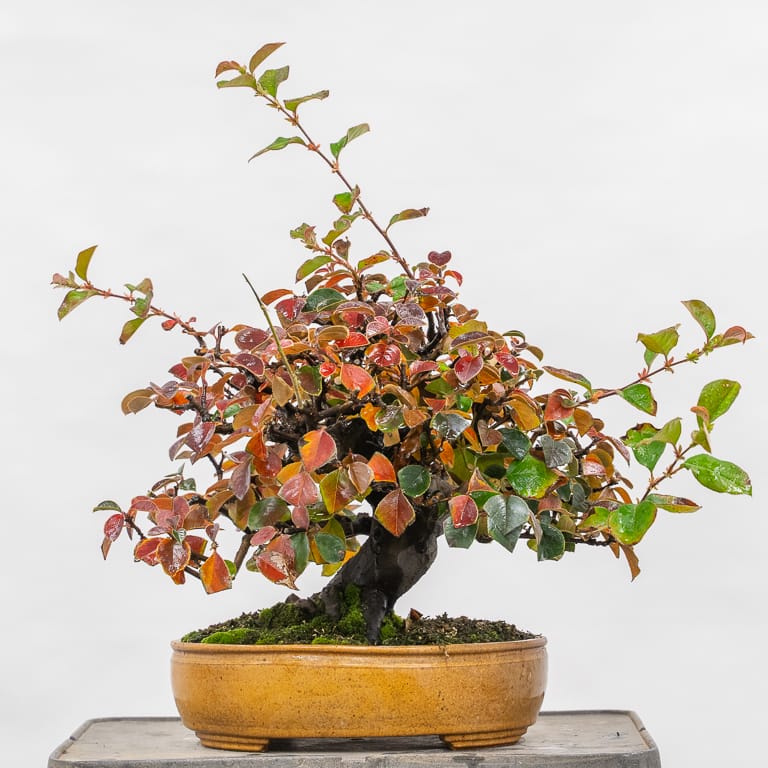
Chinese quince – December, 2019
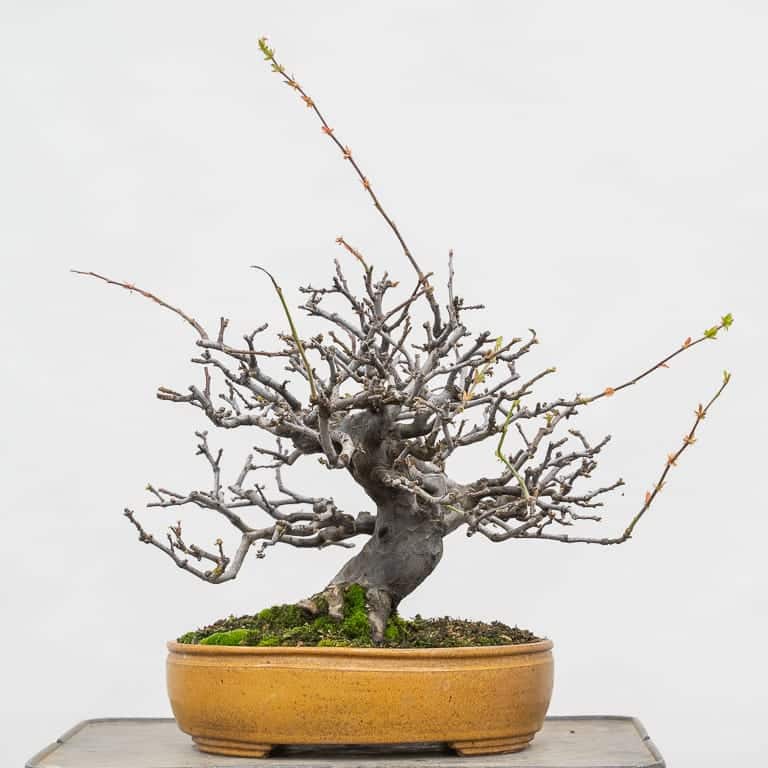
After removing the leaves – note the angular branch structure
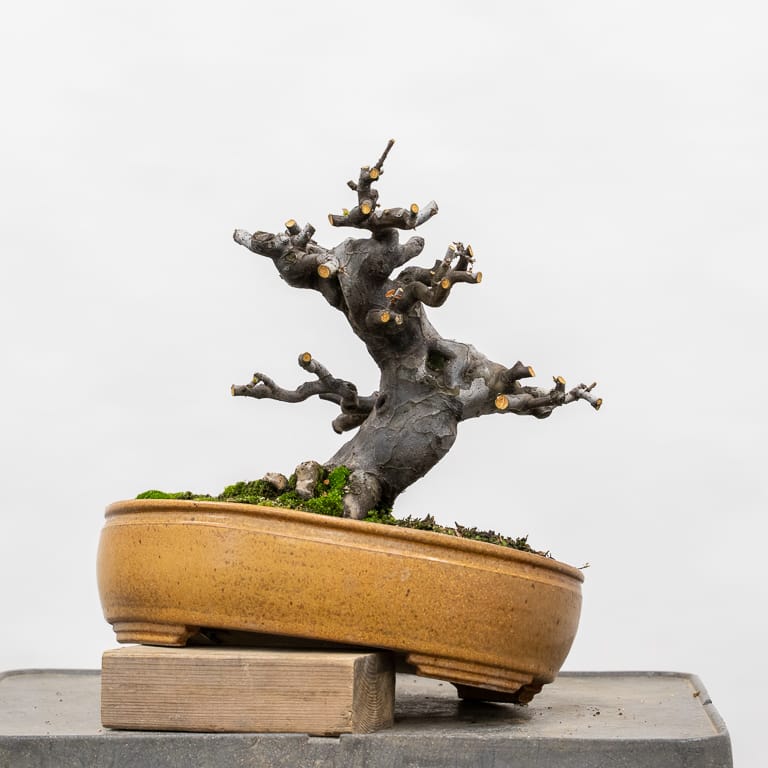
After reducing the branches
I liked the movement at the base of the branches so I cut them short instead of completely removing them. Cutting back also made it easy to see that the tree looked better at a new angle.
I repotted the tree after cutback to preserve the angle change. Since then, the tree has been growing vigorously.
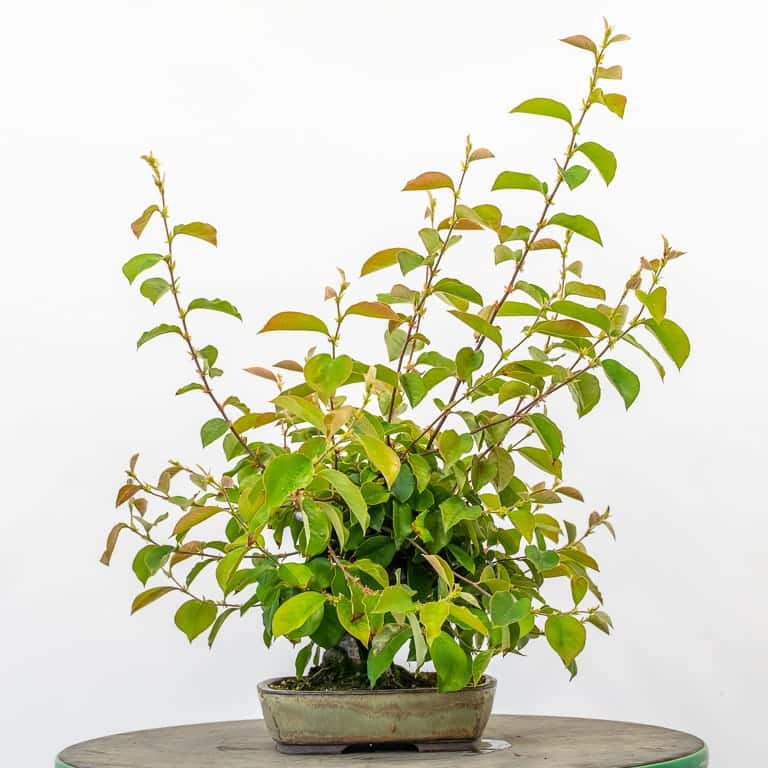
New shoots on Chinese quince
To get the tree back into shape, I made two kinds of cuts. I first reduced the spring growth back to 2-3 buds. Next, I removed any branches that wouldn’t be part of the final design (new shoots growing from the trunk, downward growing branches, and branches growing inward back toward the trunk).
Here’s the tree after spring cutback.
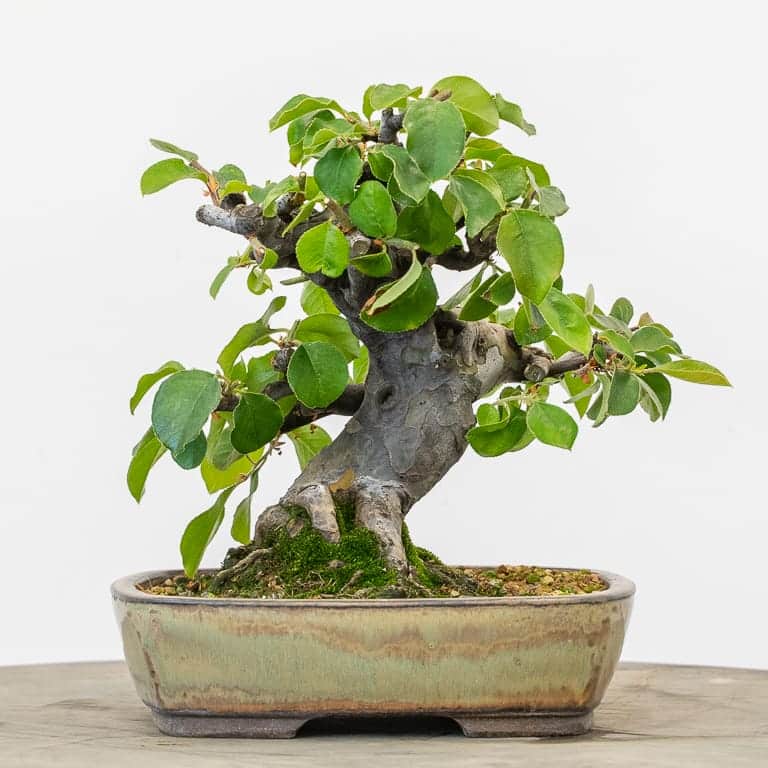
Chinese quince – 8″ tall
The remaining branches were short enough that they didn’t need wiring. I’ll let the tree grow freely through summer and look to prune again in fall.
Subscribe to Bonsai Tonight
New Posts Delivered Every Tuesday and Friday
Gary McCarthy says
SWEET little tree!!!
Is that a Sara Rayner pot?
Jonas Dupuich says
Thanks Gary! And good eye – it is a Sara Rayner pot, one of her squared ovals.
Grant says
Beautiful Jonas! The new growth is so vigorous and lush – did you fertilize as well? Spray or soak with fungicide?
Jonas Dupuich says
Thanks Grant! I’ve fertilized the tree a little with DynaGro and fish emulsion. I haven’t applied any fungicide.
Lars Grimm says
Lovely little tree. Why not let the branches grow a little longer to better thicken up. From the photos, it seems like the new branches need much more caliber before they can be included in the final design.
Jonas Dupuich says
Thanks, Lars! Because branches thicken so quickly on Chinese quince, I’m focusing on creating branch density first. Once There is a better primary and secondary branch structure I can let branches run to thicken as need be. Depending on how the tree grows over summer, I might leave a few long shoots at the end of the season.
Yaroslav says
Hi! Do I understand correctly that you don’t wait until the branch becomes the desired thickness before cutting it? In other words, are you developing a branch ramification without waiting for the primary branch to be thick? Some masters use this to achieve the desired thickness of the primary branches, and don’t touch them, allowing them to grow. And only then do they develop branch ramification.
Jonas Dupuich says
Great question Yaroslav! I usually wait until the branch is thick enough before cutting back, but because Chinese quince branches become thick quickly, and because the base of the branches on this tree are already thick, I wanted to prune the new shoot to generate more branch division. It’s easy to add thickness later.